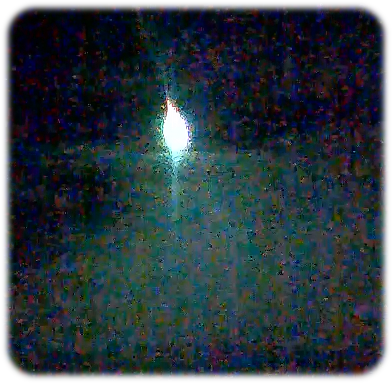
After a very intense night of Geminids, one of them, and another fireball not belonging to the Geminid metor shower, stood out in the skies of Spain.
Geminid meteor shower occurs between December 4th and 17th approximately. The main peak 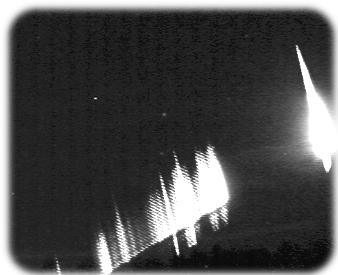 normally occurs on December 14th (as the last night). The progenitor body is the asteroid (3200) Phaeton, which is the third asteroid in size of the Solar System with an average diameter of about 512 km. Normally the meteors of this shower have a low speed, so only a few of them show persistent trails. However this shower produces very bright fireballs, as the ones that were registered last night.
normally occurs on December 14th (as the last night). The progenitor body is the asteroid (3200) Phaeton, which is the third asteroid in size of the Solar System with an average diameter of about 512 km. Normally the meteors of this shower have a low speed, so only a few of them show persistent trails. However this shower produces very bright fireballs, as the ones that were registered last night.
Last night the detectors from the SMART Project and the surveillance webcams located at Calar Alto Observatory (Almería) could register a lot of Geminids, as you can see from the picture below, but one of them was a especially bright one. The two above images at right and left are from that Geminid. On the right image, part of the fireball emission spectrum is shown.
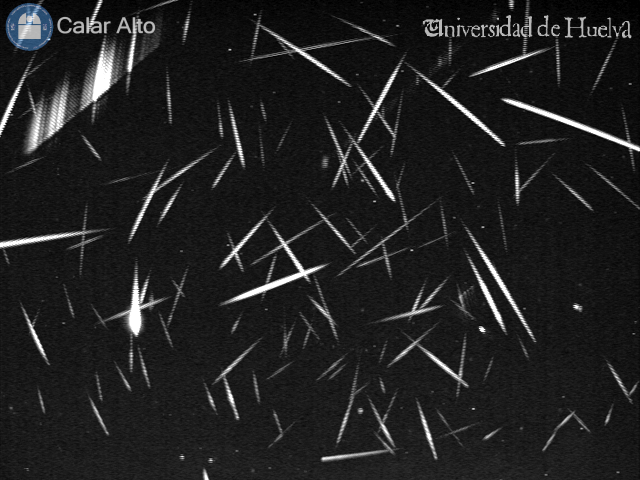
Concerning the bright Gemini, and following the preliminary analysis carried out by Professor José María Madiedo (University of Huelva) and PI of the SMART Project, the fireball occurs at 2:24 UT (3:24 local time). This Geminid entered into our atmosphere at about 122.400 km/h and it started at an altitude of about 101 km above Córdoba province (South Spain) with a very vertical trajectory. The final altitude was about 43 km above the ground.

Below are the videos of the brightest Geminid that could be registered at Calar Alto Observatory.
However, not only Geminid object were seeing last night. A bright fireball over Morocco wanted to join the party. This one started at about 114 km of altitude over Morocco and finished above Melilla (Spain) at a height of 61 km. Unfortunatelly the speed of this fireball couldn't be determined. This object could also be recorded from La Hita Observatory (Toledo, central Spain), although there is a big distance from there.
The path above the ground is shown on next image.
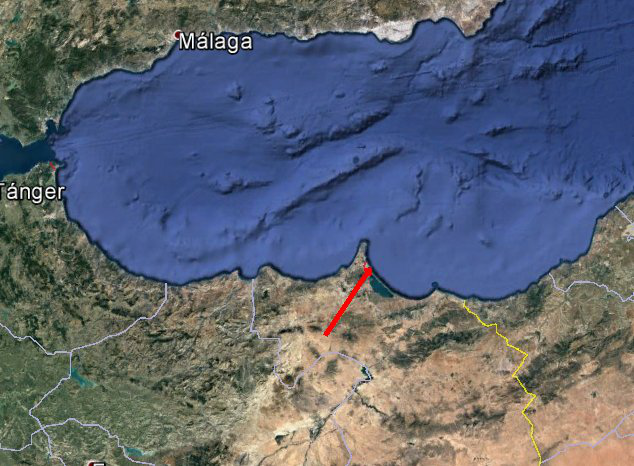
Following are the videos registered from Calar Alto Observatory.
Calar Alto (CAHA) fireball detection station, together with the one at the Observatory of Sierra Nevada (IAA-CSIC) and others placed at different locations in Spain, are part of the S.M.A.R.T. project led by Professor José María Madiedo (University of Huelva) to track that kind of objects. Specifically, Calar Alto (CAHA) station and the one at Sierra Nevada (IAA-CSIC) constitute a collaboration agreement between Professor Madiedo and both institutions.
 English (UK)
English (UK)
